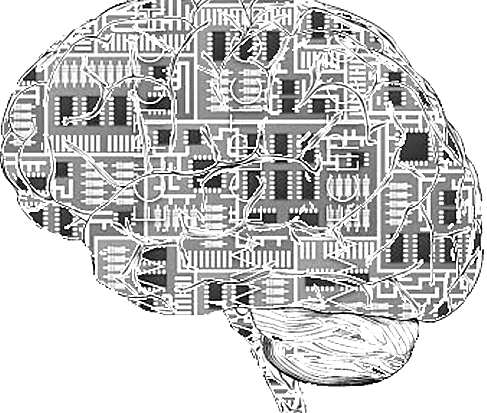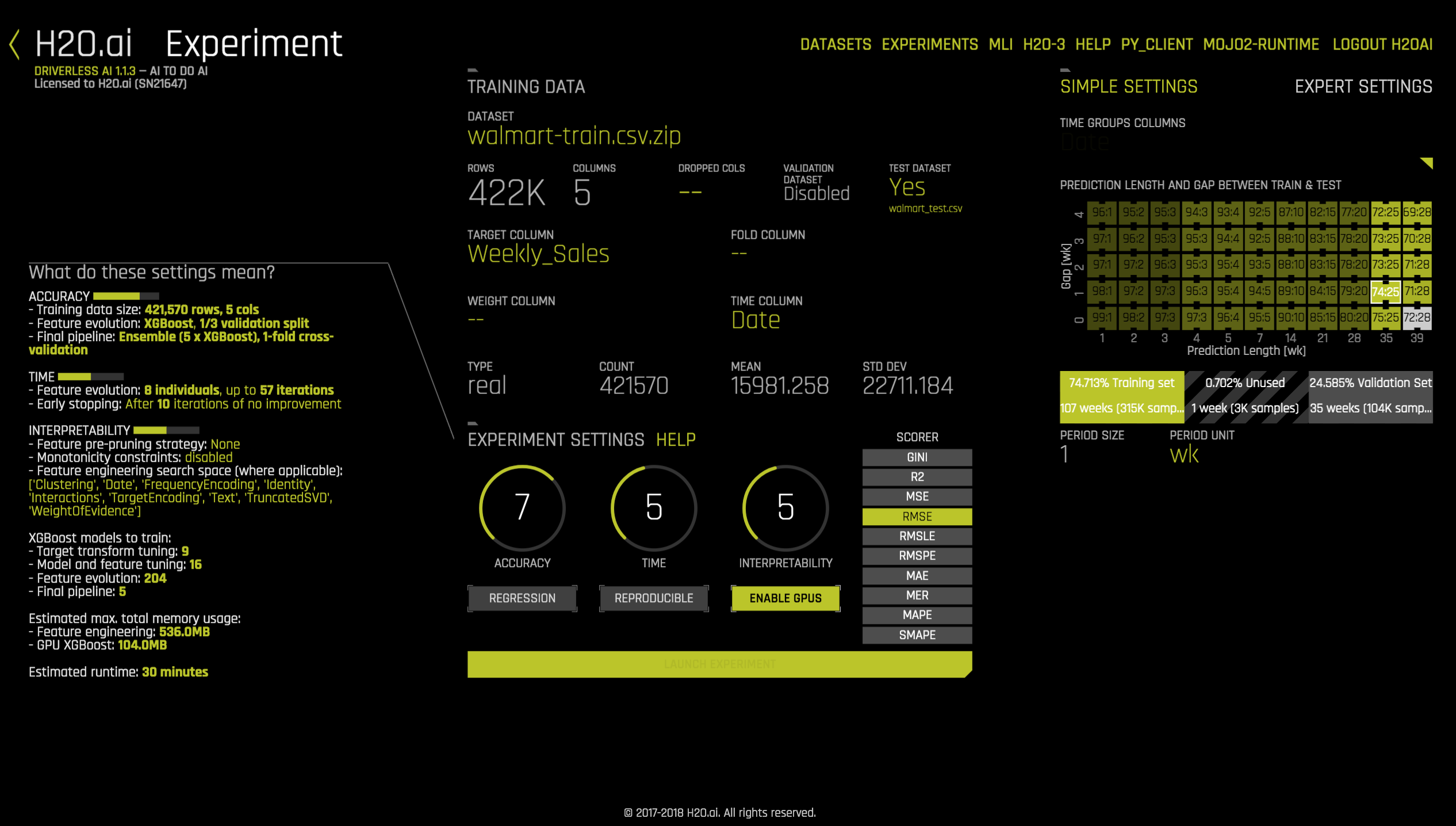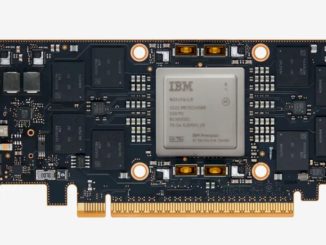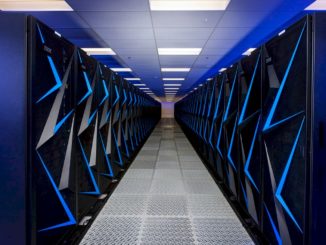
The challenge with many of the complex modern technologies that are coming into datacenters is making them easy and cheap enough for enterprises to use at a their own scale, which is much more limited than that of hyperscalers and cloud builders, and employing their own skillsets, which are also more limited. Artificial intelligence and machine learning are at the top of the list of these technologies.
What enterprises do have are the same needs to be able to crunch the relatively massive amounts of data that they are generating to find patterns and information that will drive better and faster business decisions, increase revenues, and improve efficiencies. AI, particularly as expressed in machine learning, are the key tools that will let them do all this. They just have to find ways to leverage the technologies with the resources they have.
We at The Next Platform have talked quite a bit about the search for “Easy AI,” solutions that will driven down cost and complexity and accelerate wider adoption of AI, machine learning and deep learning among enterprises of all sizes. There is a growing list of open-source frameworks and tools that organizations can leverage, including TensorFlow, Shogun, Torch, and Caffe, and a number of tech vendors are developing software suites designed to make using such frameworks easier for enterprises that have limited money and staff to throw at the issue.
H2O is one of those companies. It offers an open-source machine learning platform and algorithms that leverages GPU-based systems and such tools as Spark in-memory processing and the R statistical programming language. The company also offers Driverless AI, a platform for automated machine learning that automates such tasks as the building, training and implementation of models to enable enterprises to make sense of the data they’re amassing. The screenshot below offers a look at what Driverless AI can offer. The technology also addresses what co-founder and chief executive officer Sri Ambati says is the top issue facing enterprises today: the lack of data science talent.
“AI adoption has a couple of big problems,” Ambati tells The Next Platform. “When we started H2O five years ago, we had the crunch of not a lot of good implementations of machine learning. AI was completely closed. We pushed a very open source agenda and now we have a lot of high grade, good implementation algorithms available and now there’s a good ecosystem that’s grown around data science and machine learning. So now with the good algorithms, the crunch of good implementations is behind us. To make things even better, GPUs came around and sped up these algorithms by an order of magnitude, so we now have fast implementations of these algorithms with a good hardware-software co-design in the works. And thus the number one problem we have today in how to use AI is a talent crunch. There are not enough data scientists who can take advantage of these algorithms rapidly and solve the problems of their businesses.”
That is where the Driverless AI platform comes in, enabling businesses that might have small staffs to automate many of the processes connected with AI and machine learning. The goal, he says, is to democratize the use of AI in enterprises, and at this point AI already has “taken over” software. It is rapidly expanding it reach in enterprise software on the market now or on the way, according to Ambati. The future of AI will be in hardware and hardware-software co-designed systems that will have the compute power, storage and network capabilities and components like GPUs and their high parallel computing capabilities that can accelerate AI- and machine learning-based workloads, the CEO said.
That is the thinking behind the expanded partnership between H2O and IBM unveiled this week. IBM over the past couple of years has taken a hard turn toward pushing AI and machine learning into the enterprise in many of the hardware and software offerings it’s rolling into the market, including its Power9 systems and its focus on cognitive computing. IBM hasn’t been alone among top-tier tech companies looking to speed enterprise adoption of AI. Microsoft, Hewlett Packard Enterprise, SAP, and Cray are among a growing number of firms that see opportunity in enabling mainstream adoption of AI.
Among the tools IBM has rolled out are Data Science Experience – a cloud-based environment where data scientists can use such tools as RStudio, Jupyter and IBM’s Watson Machine Learning technology to analyze their data – and PowerAI, a platform that includes a package of common deep learning frameworks optimized to run on the vendor’s Power architecture. Last month, IBM announced the integration of PowerAI Vision – for images and videos – and Intelligent Video Analytics, enabling businesses to build AI models that can detect objects or activities and use IVA to deploy the models. IBM’s Power9 architecture includes Nvidia GPUs and an I/O subsystem that includes Nvidia’s NVLink interconnect, PCI-Express 4.0, and OpenCAPI. The company has been vocal in its decision to aim Power9 systems – particularly the just-announced “Boston” Power LC921 and Power LC922 machines but also including the top end “Newell” PowerAC922 that debuted last December – at such compute-intensive workloads as AI, HPC and analytics.
In the partnership with H2O, organizations will be able to run Driverless AI on Power9 systems to accelerate machine learning insights by five times that of competitive offerings, the vendors said. They’ll also be able to use PowerAI with Driverless AI to accelerate their adoption of AI and machine learning techniques. It expands on work the two companies already have done to integrate H2O open-source libraries into IBM’s Data Science Experience.
Sumit Gupta, vice president of AI, machine learning, and HPC at IBM, says that Driverless AI complements what IBM has been doing with PowerAI and the Power9 architecture by automating many of the steps involved with machine learning, enabling enterprises to forgo having to find people with specialized skills and making it easier for average enterprises to adopt AI.
“Your tendency is to go download a bunch of open source machine learning software, figure out what the right systems to buy are, figure out the infrastructure – whether it’s hardware or software – get the data scientists and do all this yourself,” Gupta says. “What we’re presenting to the enterprise market, H2O and IBM together, is a complete AI platform. You roll it in, you have all these automated machine learning features that you still need a data engineer or a somewhat trained data scientist but not a super ninja data scientist.”
H2O’s Ambati said he has seen growing momentum among enterprise customers – which include Comcast, Progressive Insurance, Walgreens, and PayPal – to use AI and machine learning in more parts of their businesses. At Capital One, the company’s technology was used for fraud detection. It then starting to be used in other areas, such as auto financing.
“By the end of years of work there, they built a center for machine learning and AI excellence, and AI became more of a transformative moment throughout the company as opposed to a couple of use cases,” he says. “What we’re beginning to see is that that is a much wider [path] in AI-first companies. There are a lot more AI-infused companies as opposed to just being helpful in [smaller use cases]. There are a lot of interesting use cases you would never have typically thought of as a forward-looking use case, but once we land into a company, when they see AI being adopted by one group, we’re seeing it adopted across all groups.”
Right now it’s the gap in skills that is the challenge.
“The problem we have right now is the time, the data and the AI technologies have arrived,” Ambati says. “Industries are becoming inundated with data. Even individuals have been inundated with data. The time for applying AI to simplify our lives is now, but unfortunately … not all of us are physicists or are able to look at data in ways that a mathematician or a Kaggle grand master can look at it and simplify that data in a very simple kind of way. Businesses are competing in a very global world where math and sciences and technology are in a place where we can no longer bet our farm on our engineering talent and the rate in which we can build it. Automation is the only way to go. If we, as an economy and a culture, want to keep up our place in the race for the future, we need to be applying AI almost ubiquitously.”






Be the first to comment